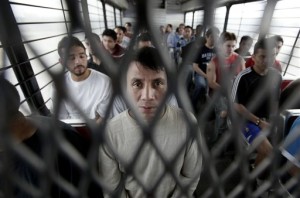
Data from Mexico’s National Immigration Institute indicate that the country has deported 79 percent more people – at least 51,565 individuals – from Central America’s Northern Triangle region since January 2015 than the same time last year. The government statistics shed light on both the ongoing crises in Guatemala, Honduras and El Salvador that are forcing mass migration northward, and also the measures the Mexican government have adopted to stem that tide and increase vigilance along their southern border.
“Masked officers with rifles run operations on the train to keep (migrants) off and to remove migrants from the train,” Mexican migrant activist Miguel Figueroa said. “They set up checkpoints on the highways, above all in the southern states of Tabasco, Oaxaca, Chiapas and Veracruz. They enter hotels in the areas where migrants take shelter waiting for rides.”
With violence still erupting in the Northern Triangle and with migrants now getting caught more in Mexico even before reaching the United States, questions linger as to how to appropriately address this situation. Mexico’s militarized approach to stanching the seemingly ceaseless flow in their Southern Border Plan has drawn much international criticism, where critics say that the government crackdown is only exposing these migrant groups to more violence, more vulnerability to extortion, and more uncertainty. There remains significant “concern over stepped-up actions reportedly being taken against migrant persons,” according to the Inter-American Commission on Human Rights.
“The route north is changing,” said Ursula Roldan, a migration coordinator in Mexico. “Maybe, too, they are beginning to use maritime routes, even more dangerous than the other migration routes.”

Recent Comments